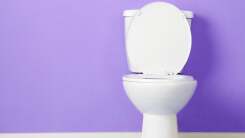Clogged toilets can be a frustrating ordeal, especially when you have a low-flow toilet. These modern marvels of water conservation often struggle to handle waste efficiently, leading to frequent clogs that leave us feeling exasperated. Understanding why these clogs occur and implementing effective prevention methods is crucial for maintaining a smoothly functioning low-flow toilet.
The Science behind Low-Flow Toilet Clogs: A Delicate Balance
Low-flow toilets are designed to use less water per flush, making them eco-friendly alternatives to traditional models. However, this reduction in water volume can sometimes disrupt the delicate balance required for efficient waste removal. The lower amount of water may not generate enough force to push waste through the pipes effectively, resulting in blockages that impede proper flushing.
Beyond Plungers: Practical Steps for Preventing Low-Flow Toilet Clogs
To prevent clogs in low-flow toilets, it’s essential to adopt proactive measures beyond relying solely on plungers as reactive solutions. Firstly, consider adjusting your flushing habits by breaking up larger loads into smaller flushes or using the half-flush option if available. Additionally, choosing toilet paper specifically labeled as “septic-safe” or “low-flow compatible” can help minimize potential blockages caused by excessive residue buildup.
Maintaining Optimal Performance: Regular Maintenance and Professional Assistance
Regular maintenance plays a vital role in preventing clogs and ensuring optimal performance from your low-flow toilet. Periodically inspecting the flapper valve and replacing it if necessary helps maintain proper seal integrity during each flush. Furthermore, scheduling professional plumbing inspections at least once a year allows experts to identify any underlying issues before they escalate into major clogging problems.
Conclusion: A Clear Path to Clog-Free Low-Flow Toilets
While low-flow toilets may be prone to clogs, understanding the reasons behind their susceptibility and implementing preventive measures can help you maintain a smoothly functioning system. By striking a delicate balance between water conservation and efficient waste removal, adopting proactive flushing habits, using septic-safe toilet paper, and investing in regular maintenance, you can enjoy the benefits of an eco-friendly toilet without the frustration of frequent clogs.
